The internet is one of the greatest tools available to a tournament Magic player in our current age. From new player to seasoned veteran, everything you need can easily be found if you want to best prepare for a tournament. Last week’s results, the hot new tech, tournament preparation info and so much more is all waiting at your fingertips if you want to look. In fact, this very website has many of those resources laid out for you to do just that. A quick stroll around can help you gain so much knowledge in such a short amount of time.
Personally, I love the ability to look at decklists online. Whether it is the list that took down last week’s tournament or a pet deck that someone is writing an article about, it makes it much easier to find every angle in a format. Magic is a game of many interactions, and it can be tedious if not impossible to figure out which ones can cut it. Luckily, the internet combines the minds of millions of Magic players in an effort to solve the questions collectively presented to us, such as “Can Spellheart Chimera and Young Pyromancer make a deck?” Of course, this is not without its flaws as you can’t trust everything you read (especially on the internet), but overall we live in an age where questions can be answered so much more efficiently.
Whenever I’m feeling that a format is starting to get a tad boring, the internet is typically my first savior. Just because all of my decklists lead back to Nykthos, Shrine to Nyx, does not mean that everyone else has been having the same issue. Looking at Magic Online Daily Event results are perfect for me. Not only do you get to see lists ranging from heavily tuned to new brews, but they also get put through the paces a bit.
Winning three out of four rounds is certainly not an incredibly difficult task, but it is certainly not a given. It might not show you whether or not someone has broken the format, but it will show you that the deck can win some games. I know that I’ve thrown together a brew or two that could basically never win a single game.
Today I want to go over some awesome decklists that I have found from looking around online. I certainly don’t think that the format is stale yet, but it would certainly be nice to play something other than Mono Black or Mono Blue Devotion. These are decks that I believe can be made tournament-worthy with some tuning. They may never break the format, but they can certainly win some rounds and you can have fun in the process. Some of these decks may be a bit more mainstream than others, but all of them are lists that I know I certainly had never seen before. Without any further ado, let’s get to the lists.
Creatures (26)
- 4 Ash Zealot
- 4 Frostburn Weird
- 4 Burning-Tree Emissary
- 4 Boros Reckoner
- 3 Purphoros, God of the Forge
- 3 Stormbreath Dragon
- 4 Fanatic of Mogis
Planeswalkers (2)
Lands (25)
Spells (7)

When I found this decklist, I was immediately impressed. This list takes the sort-of normal Mono Red Devotion list and adds a splash of white for Chained to the Rocks and some sideboard cards. While Mono Red Devotion may seem a bit mainstream seeing as it just Top 8’ed Pro Tour Theros in the hands of Kamiel Cornelissen, I feel that the deck hasn’t really caught on yet. You can be a strong aggro deck against control, utilizing cards like Boros Reckoner, Fanatic of Mogis, and Stormbreath Dragon… and against aggro you switch roles and become the control deck with walls like Frostburn Weird and Forge[/author]“]Purphoros, God of the [author name="Forge"]Forge[/author].
Regardless of why the deck has not caught on yet, this list in an interesting take on it. The splash may not seem like something crazy, but it gives the deck something that I feel it didn’t really have before as well as redundancy in certain departments. Chained to the Rocks fills a role in the deck that Mono Red really didn’t have – solid removal spells. Certain creatures like Desecration Demon and opposing Boros Reckoners can give you fits, but Chained to the Rocks can deal with those creatures in a cheap and efficient way.
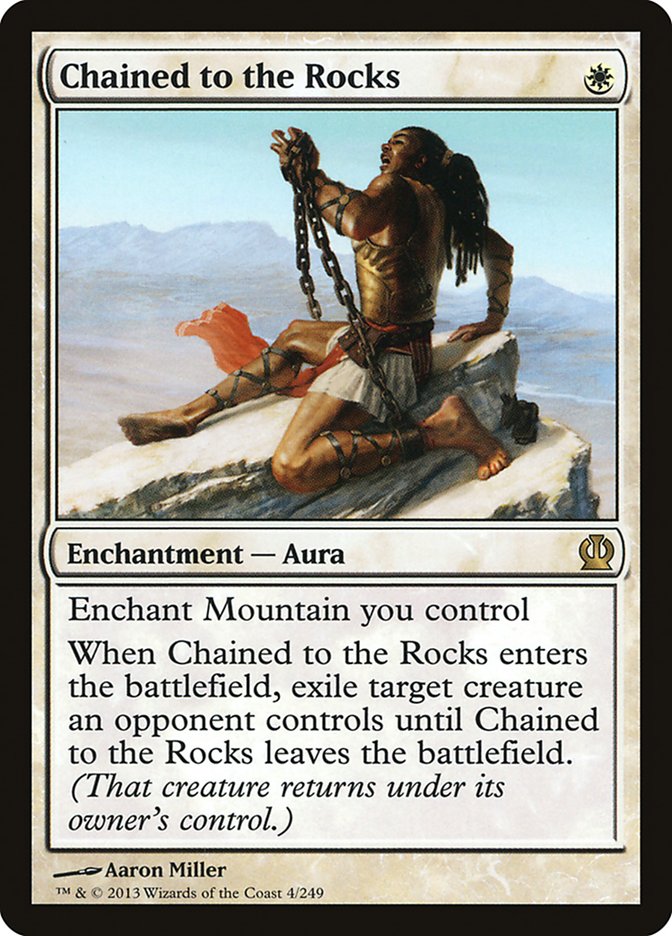
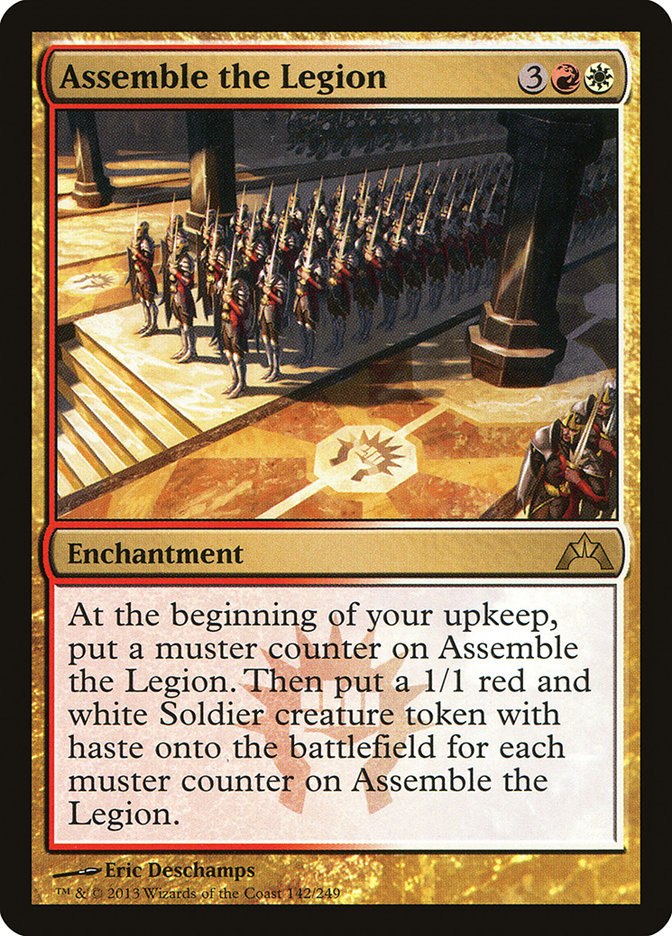
Assemble the Legions a serious threat in the control matchups. It’s another permanent-based threat that can’t just be Wrathed, forcing them to hold their Detention Spheres for later in the game and potentially allowing our cheap creatures to run them over. If left unanswered, it will win the game singlehandedly with ease.
Overall, I’m a fan of what this deck is doing. I’m not entirely sure I like Hallowed Fountain though. For those wondering, it is another white source that can still cast Frostburn Weird, but are you really winning the game if you only have one red source and a Hallowed Fountain? Sure, you can cast your Frostburn Weird now, but you can’t cast a lot of your other spells. I’d have to play the deck first, but I’m skeptical.
Creatures (17)
Planeswalkers (3)
Lands (25)
Spells (15)

This deck is a bit odd. At times it seems like an aggro deck, and other times it seems like a midrange deck. What this deck seems like it’s trying to do is to play the format’s most versatile removal spells and the most broad-spectrum creatures. It seems that every creature in the deck can be solid on offense as well as on defense in some fashion.
Deathrite Shaman serves as a cheap threat that gives you some good reach in the late game. Skylasher is another cheap threat, filling an otherwise empty hole on the curve. Against blue decks it can be almost impossible to answer in the early game without a Supreme Verdict, and while it’s not exactly the largest creature on the block it certainly represents a threat. Throw a Gift of Orzhova on it and you have sped it up by a few turns.
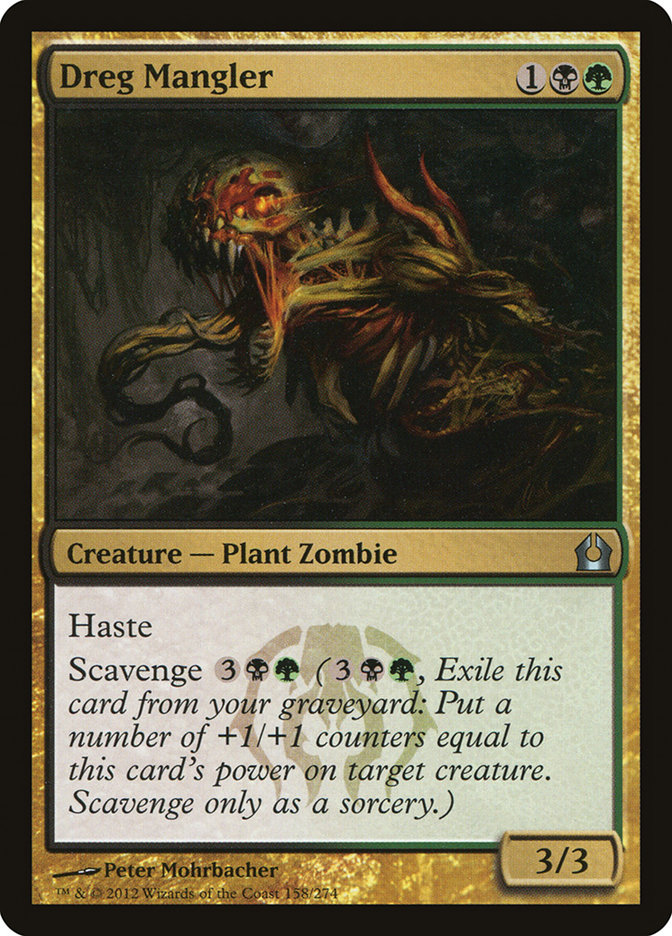
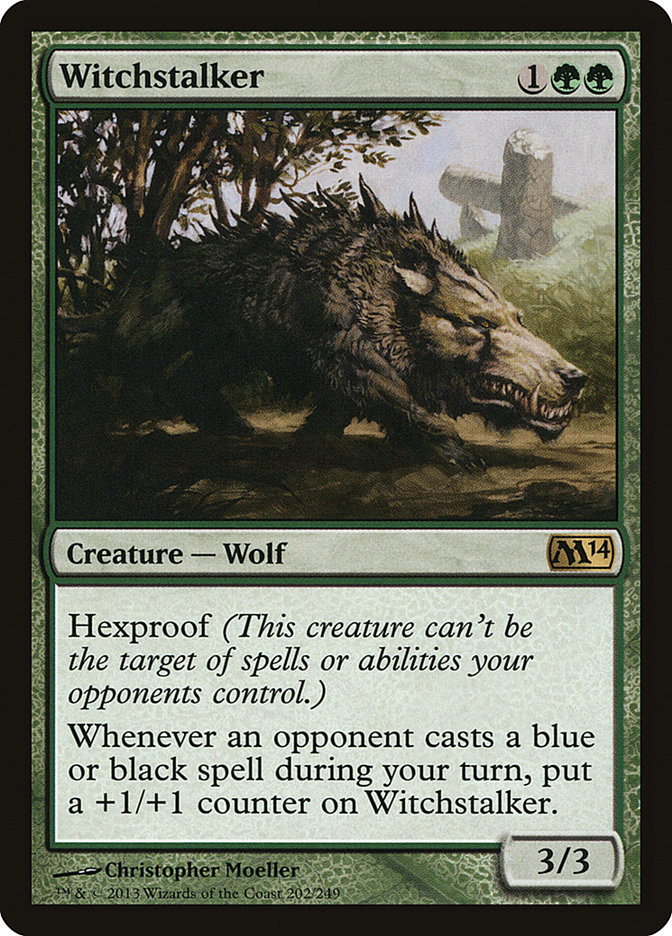
Dreg Mangler and Witchstalker represent that beefy threat on three. Dreg Mangler is a very strong clock with some staying power in the late game, while Witchstalker is in the same vein as Skylasher – a difficult threat to answer. The difference between the two is that Witchstalker can be blocked, but it also gets large pretty quickly if your opponent is not careful. These two cards work well together, as late in the game you can scavenge the Dreg Mangler onto Witchstalker giving you a 6/6 Hexproof body.
The removal package is pretty straightforward. Abrupt Decay and Hero’s Downfall are obvious, but Vraska the Unseen has been mostly forgotten since rotation. She’s another card that can play defense reasonably well and can turn the corner, allowing you to win the game at a reasonable pace if left unanswered. Thoughtseize is in a sense the most versatile removal there is, and is the core strength of the Mono Black Devotion deck.
Creatures (18)
- 1 Trostani, Selesnya's Voice
- 4 Voice of Resurgence
- 3 Scion of Vitu-Ghazi
- 4 Elvish Mystic
- 4 Boon Satyr
- 2 Voyaging Satyr
Planeswalkers (3)
Lands (25)
Spells (14)

This is the most straightforward list thus far, but I think that comes from it being a more linear style of deck. Instead of going for the more aggressive plan that GW decks in this format take with cards like Dryad Militant, this list is trying to go a bit more over the top and hit harder.
You still have Boon Satyr and Voice of Resurgence in the list, mostly because of their ability to bury your opponent with relative ease while filling important spots on the curve. Elvish Mystic and Voyaging Satyr allow you to start casting your large threats ahead of schedule. A turn six Elspeth, Sun’s Champion is already hard to beat, but resolving one on turn four? Best of luck!
Scion of Vitu-Ghazi and Trostani, Selesnya’s Voice fill out the creature column, with both serving as really versatile creatures. Both can overwhelm your opponent quickly while also doing good work to pad yourself against aggro. Advent of the Wurm and Call of the Conclave represent your pseudo-creatures that are incredibly efficient in the power-to-cost ratio. Selesnya Charm hasn’t been talked about much over the past few weeks, but its versatility should not be ignored. With how popular Desecration Demon has become, having a clean answer that exiles is (take that, Whip of Erebos!) is invaluable.
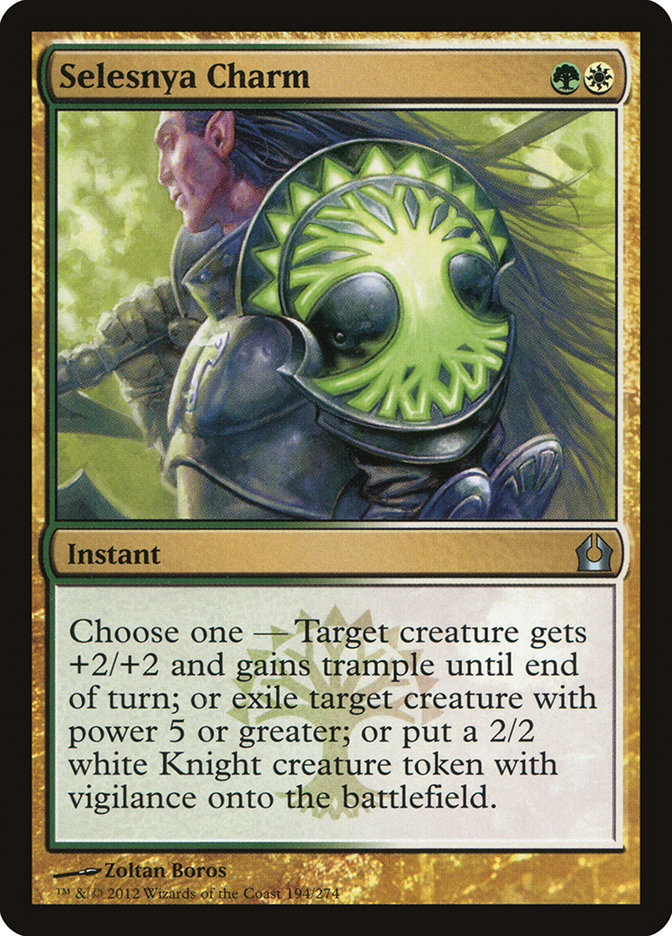
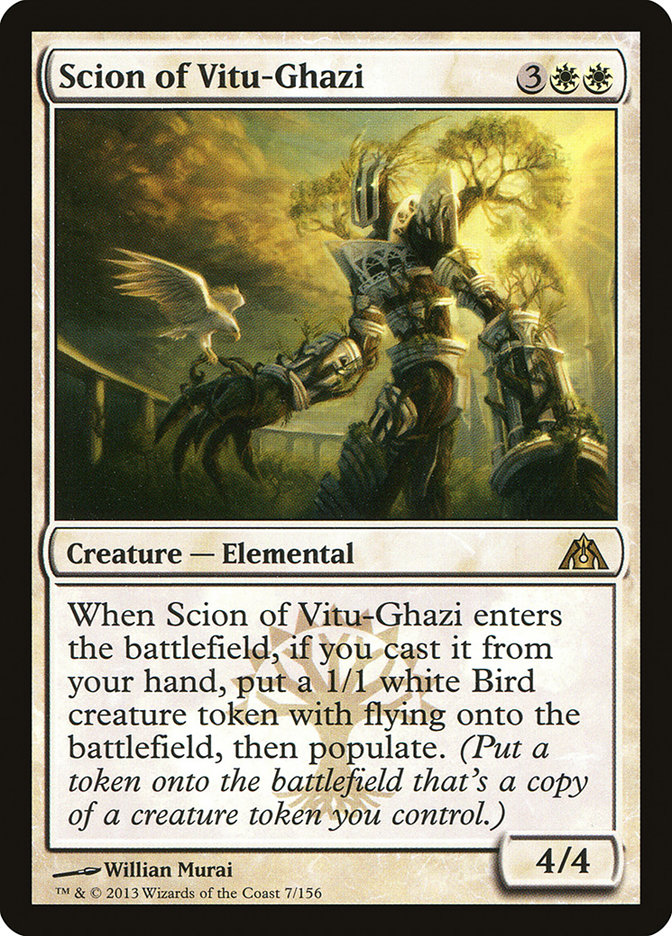
Rootborn Defenses and Elspeth, Sun’s Champion round out the spells. The former is mostly used to fight wrath effects and make combat more favorable, but it can also just be an instant-speed token producer when that’s right. Elspeth represents the end boss of the deck. It furthers the token plan, deals with large creatures, and represents a must-answer threat with immediate board impact. She is particularly strong at protecting herself very well the turn she hits the board.
A common theme among these decks, as well as this format in general, seems to be versatility. It’s still an open format, and you want to be prepared for everything. Being able to have many of your cards play both aggressive and defensive roles is key, and turning the corner is important. That is why Desecration Demon is one of the stronger cards in the format right now – being able to stabilize the board and then put your opponent under immense pressure is not to be underestimated. Your removal also needs to be versatile, as your opponents will be fighting you from as many angles as they can.
Do you have any brews that you think have potential to take the format by storm? Or maybe you’ve been working on a cool new deck to impress your friends at FNM? Either way, post them in the comments, as I’d love to see what you’ve been working on. Forums can be a good way to tune your list, as many minds working together can often solve problems.
@AJKerrigan55 on Twitter
Deadlyporcupine@gmail.com
AJKerrigan on Magic Online
